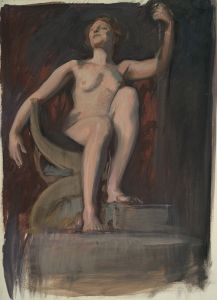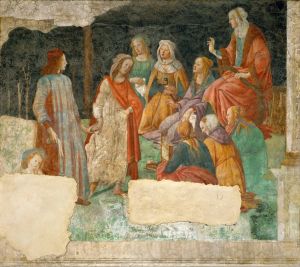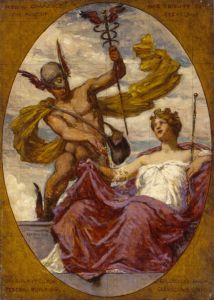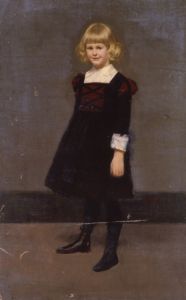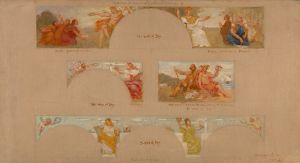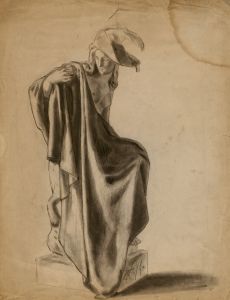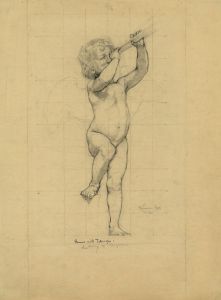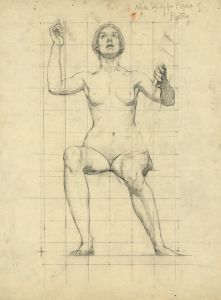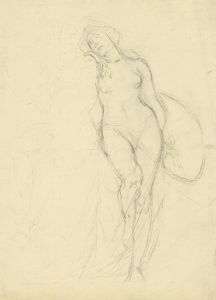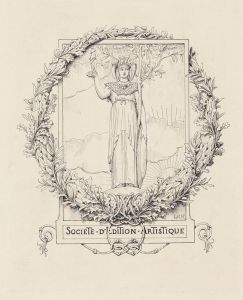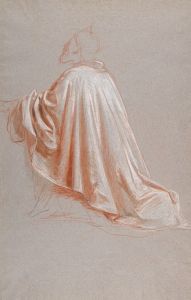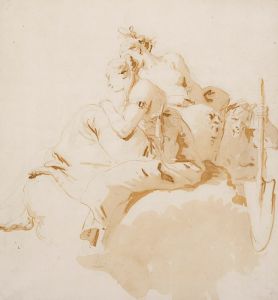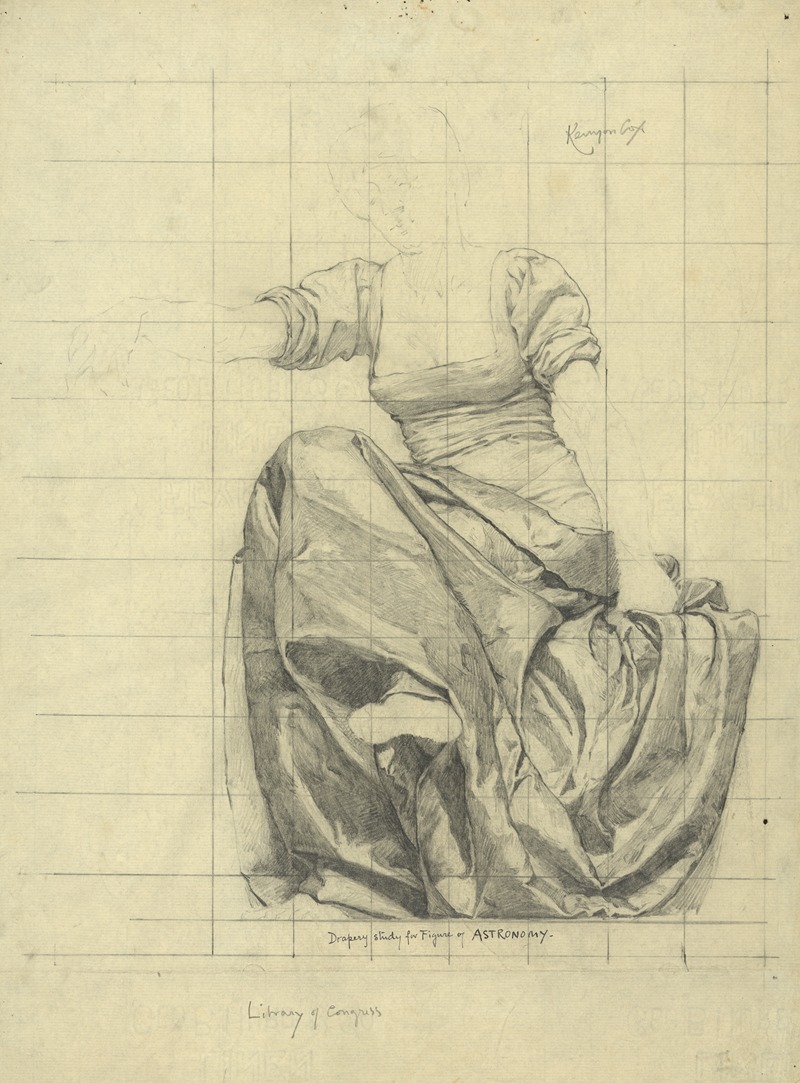
Drapery study for figure of Astronomy
A hand-painted replica of Kenyon Cox’s masterpiece Drapery study for figure of Astronomy, meticulously crafted by professional artists to capture the true essence of the original. Each piece is created with museum-quality canvas and rare mineral pigments, carefully painted by experienced artists with delicate brushstrokes and rich, layered colors to perfectly recreate the texture of the original artwork. Unlike machine-printed reproductions, this hand-painted version brings the painting to life, infused with the artist’s emotions and skill in every stroke. Whether for personal collection or home decoration, it instantly elevates the artistic atmosphere of any space.
Kenyon Cox (1856–1919) was an American painter, illustrator, muralist, and writer, known for his academic style and contributions to the American Renaissance movement. One of his notable works is the "Drapery Study for Figure of Astronomy," which is a preparatory drawing for a larger mural project. This study exemplifies Cox's meticulous approach to composition and his dedication to classical techniques.
The "Drapery Study for Figure of Astronomy" was created as part of Cox's preparatory work for a mural in the Library of Congress's Thomas Jefferson Building in Washington, D.C. The building, completed in the late 19th century, is renowned for its elaborate murals and decorations, which were intended to celebrate human knowledge and achievement. Cox was among several artists commissioned to contribute to this grand project.
In this particular study, Cox focused on the drapery of the figure representing Astronomy, one of the allegorical figures in his mural. The study showcases his skill in rendering fabric and the human form, capturing the intricate folds and the way light interacts with the material. Such studies were crucial for artists of Cox's time, as they allowed them to experiment with composition, lighting, and texture before committing to the final work on a larger scale.
Cox's work is characterized by its adherence to classical ideals and techniques, reflecting his training at the Pennsylvania Academy of the Fine Arts and later at the École des Beaux-Arts in Paris. His time in Europe exposed him to the works of the Old Masters, which heavily influenced his style. Upon returning to the United States, Cox became a prominent figure in the American art scene, advocating for traditional artistic values during a time when modernism was beginning to gain traction.
The "Drapery Study for Figure of Astronomy" is not just a technical exercise but also a testament to Cox's belief in the educational and moral power of art. By depicting allegorical figures like Astronomy, Cox and his contemporaries aimed to inspire viewers with the virtues of knowledge and the pursuit of understanding. This aligns with the broader mission of the Library of Congress murals, which sought to embody the spirit of enlightenment and intellectual progress.
Cox's contributions to the Library of Congress and other public buildings helped cement his legacy as a key figure in the American Renaissance. His works continue to be studied for their technical proficiency and their role in the cultural and artistic movements of the late 19th and early 20th centuries. The "Drapery Study for Figure of Astronomy" remains an important piece for understanding Cox's artistic process and his commitment to the ideals of beauty and knowledge.





